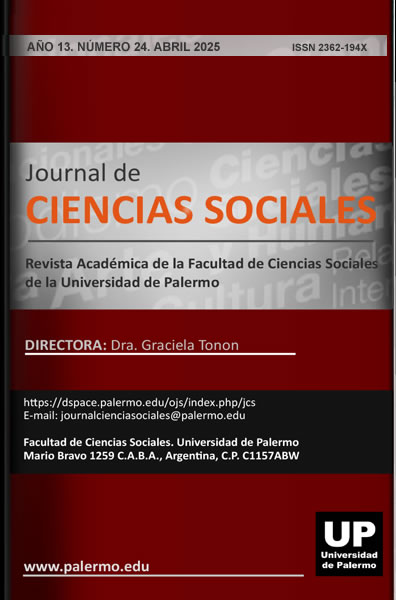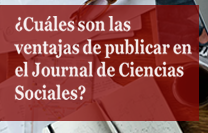Ensayo sobre la memoria colectiva como motivación social del turismo oscuro en la zona de exclusión de Chernobyl, Ucrania
Resumen
El turismo oscuro es una rama del turismo que se dedica a visitar lugares asociados a la muerte y a la tragedia. La memoria colectiva adquiere significado en áreas específicas, marcando identidades en entornos concretos, convirtiéndose así en una parte integral del patrimonio cultural. Su relevancia se manifiesta especialmente en la transformación de zonas antes marcadas por catástrofes convertidas en destinos turísticos. Para ello este ensayo pretende indagar sobre el turismo oscuro que se realiza en la zona de exclusión, ubicada en Ucrania. Punto que logró atraer a más de 100.000 turistas durante el año 2019, superando cinco veces la cantidad de turistas que visitaron el mismo punto en años anteriores. Se buscó comprender este crecimiento desde la perspectiva de la memoria colectiva y la motivación de las personas que eligen ese destino como demanda de turismo planificado. A su vez el objetivo fue establecer cómo el turismo oscuro promueve el desarrollo de la memoria colectiva y la conservación y difusión del patrimonio cultural. Analizando su sistema turístico, su infraestructura, estructura y superestructura, como así también sus atractivos, equipamientos e instalaciones. Los resultados esperados de este trabajo contribuirán a una visión integral sobre el turismo oscuro y se espera lograr una comprensión general sobre el fenómeno del turismo oscuro y su desarrollo en la última década del 2013 al 2023.
Descargas
Citas
Acosta Uribe, B., Barrientos Gutiérrez, N. E. y Pulido Criollo, F. (2018). Modelo integrado de planeación turística: aspectos clave para el desarrollo turístico y regional en La Chinantla Baja. En E. Pérez Campuzano y V. E. Mota Flores (Coords.), Impacto socio-ambiental, territorios sostenibles y desarrollo regional desde el turismo (Vol. II, pp. 636-651). https://ru.iiec.unam.mx/4286/
Alfonso González, D. (2009). El turismo desde un enfoque de sociología constructivista. Teoría y Praxis, (6) 107-122. http://www.teoriaypraxis.uqroo.mx/doctos/Numero6/Gonzalez-Damian%28107-122%29.pdf
Alonso, O., Blanco, R. y Diessler, M. (2022). Motivación para realizar turismo oscuro: técnicas de investigación aplicadas al turismo. UADE.
Arnold, M. y Osorio, F. (1998). Introducción a los conceptos básicos de la teoría general de sistemas. Revista de Epistemología de Ciencias Sociales Cinta moebio, 3, 40-49. https://www.moebio.uchile.cl/03/frprinci.html
Carrera, G. (2003). El patrimonio inmaterial o intangible. Junta de Andalucía. Disponible en: https://alcalalareal.es/wp-content/uploads/2020/08/el_patrimonio_inmaterial_o_intangible1.pdf
Casassas Ymbert, J. (2008). La història declinant. Breus notes sobre l'auge de la "memòria històrica". Cercles: revista d'història cultural, (11), 8-15. https://revistes.ub.edu/index.php/cercles/article/view/16506
Chan, N. (2011). Circuitos turísticos-programación y cotización (4ta Ed.). Ediciones Turísticas. https://n9.cl/03nym
Colomines i Companys, A. y Villarroya i Font, J. (2007). Història i memòria del segle XX. Afers: fulls de recerca i pensament, 22(56), 11-15.
Cooper, C. (2003). Progress in tourism research. En C. Cooper (Ed.), Classic Review in Tourism (pp. 1-8). Channel View Publications.
Durkin, K. F. (2003). Death, dying, and the dead in popular culture. En C. D. Bryant y D. L. Peck (Eds.). Handbook of Death & Dying (pp. 43-49). Sage Publications. https://sk.sagepub.com/reference/death
Frausto Martinez, O. (2017). Turismo oscuro: el desastre del huracán Janet de 1955 en la ciudad de Chetumal, México. Teoría y Praxis, (24), 175-196. http://www.teoriaypraxis.uqroo.mx/doctos/numero24/Frausto.pdf
García, J. M. (2005). La forma narrativa de la memoria colectiva. Polis: Investigación y análisis sociopolítico y psicosocial, 1(1), 9-30. https://polismexico.izt.uam.mx/index.php/rp/article/view/396
Guerrero Gonzales, P. E., y Ramos Mendoza J. R. (2014). Introducción al Turismo. Grupo Editorial Patria.
González Vázquez, D. y Mundet i Cerdan, L. (2018). Lugares de memoria traumática y turismo: paradigmas analíticos y problemáticas. Investigaciones Turísticas, (16), 108-126. https://doi.org/10.14198/INTURI2018.16.06
Halbwachs, M. (2004). La memoria colectiva. Prensas Universitarias de Zaragoza. (Original publicado en: 1968).
Ibáñez Pérez, R. M. y Cabrera Villa, C. (2019). Teoría General del Turismo: un enfoque global y nacional. Universidad Autónoma de Baja California Sur - AMIT
Jedlowski, P. (2000). La sociología y la memoria colectiva. En A. Rosa, G. Bellelli y D. Bakhurst (Eds.), Memoria colectiva e identidad nacional (pp. 123-134). Biblioteca Nueva.
Jelin, E. y Langlansd, V. (2003). Monumentos, memoriales y marcas territoriales. Siglo XXI.
Jorge Expósito, R. y Schiemann, J. M. (2020). El Turismo oscuro como nueva tendencia turística, motivación del turista oscuro y su capacidad para generar beneficios en la isla de Tenerife. Trabajo para Grado en Turismo por la Universidad de La Laguna. http://riull.ull.es/xmlui/handle/915/24259
Lennon, J. J. y Foley, M. (2007). Dark tourism: the attraction of death and disaster. Thomson.
Maslow, A. (1991). Motivación y personalidad. Ediciones Díaz de Santos. (Original publicado en: 1954).
Molina, S. (1986). Planificación del turismo. Nuevo tiempo libre.
Nora, P. (2008). Pierre Nora en Les lieux de mémoire (L. Masello Trad.). Trilce. (Original publicado en: 1984.
Núñez Díaz-Balart, M. (2011). Representaciones de la memoria. En R. Escudero Alday (Coord.), Diccionario de memoria histórica: conceptos contra el olvido (pp. 33-38). Los Libros de la Catarata
Oliveira Santos, G. E. (2005). Modelos teóricos aplicados al turismo. Estudios y perspectivas en turismo, 16(1), 96-110. http://www.scielo.org.ar/scielo.php?script=sci_arttext&pid=S1851-17322007000100005&lng=es&tlng=es.
Paez, D., Insúa, P. y Vergara, A. (1992). Halbwachs y la memoria colectiva: la imagen histórica de Europa como un problema psicológicosocial. Interacción Social, 2, 109-125. https://n9.cl/c69g91
Plog, S. C. (1974). Why destination areas rise and fall in popularity. Cornell Hotel and Restaurant Administration Quarterly, 14(4), 55-58. https://doi.org/10.1177/001088047401400409
Sancho, A. (Dir.). (1998). Introducción al turismo. Organización Mundial del Turismo. https://asesoresenturismoperu.wordpress.com/wp-content/uploads/2016/03/81-introduccionalturismo_omt.pdf
Seaton, A. V. (1996). Guided by the dark: From thanatopsis to thanatourism. International Journal of Heritage Studies, 2(4), 234–244. https://doi.org/10.1080/13527259608722178
Schuman, H. y Scott, J. (1989). Generations and Collective Memories. American Sociological Review, 54(3), 359-381. https://www.jstor.org/stable/2095611?origin=crossref
Stone, P. (2013). Dark Tourism, Heterotopias and Post- Apocalyptic Places: The Case of Chernobyl. En L. White y E. Frew (Eds.), Dark Tourism and Place Identity: Managing and interpreting dark places (pp. 79-93). Routledge
Van Broeck, A. y López López, Á. (2018). Turismo oscuro: de la conmemoración a la comodificación de la muerte, los desastres y lo macabro. Teoría y Práxis, (24), 23-68. http://www.teoriaypraxis.uqroo.mx/doctos/numero24/Van_Broeck,Lopez.pdf
Villa Rosendo, K. P. (s/f). Turismo oscuro. Metamorfosis del espacio. Universidad Autónoma Metropolitana. México. https://repositorio.xoc.uam.mx/jspui/bitstream/123456789/24705/1/50502.pdf
Von Bertalanffy, L. (1969). General systems theory and psychiatry an overview. G. Braziller.
Otros documentos consultados
MarcoS. (2019, 30 de enero). Excursión privada de día completo a Chernóbil y la ciudad de Prípiat desde Kiev. CHERNOBYL TOUR, Tripadvisor. Disponible e: https://www.tripadvisor.com.mx/ShowUserReviews-g294474-d3370334-r649146365-CHERNOBYL_TOUR-Kyiv.html
Castro, N. (2019, 21 de junio). Chernobyl | Así es el único hotel para turistas en la zona nuclear. Todo Noticias-Canal de YouTube. https://www.youtube.com/watch?v=MQljN11eZgI
Consejo Internacional de Monumentos y Sitios (ICOMOS) (2008). Carta ICOMOS para Interpretación y Presentación de Sitios de Patrimonio Cultural. Ratificada por la 16ª Asamblea General del ICOMOS, Québec, 4 de octubre. https://www.icomos.org/images/DOCUMENTS/Charters/interpretation_sp.pdf
Documentaries Remarkable. (2022, 5 de abril). Chernobyl's Cafe. YouTube. Disponible en: https://www.youtube.com/watch?v=oH3e7fcU97M
Gill, V. (2019, 18 de febrero). Chernobyl: el final de un extraordinario experimento de tres décadas. BBC Ciencia - BBC News Mundo. https://www.bbc.com/mundo/noticias-internacional-47253432
MattG_313. (2016, 6 de agosto). Una historia sobre la tragedia de los errores humanos y su Two World Trade Center. CHERNOBYL TOUR, Tripadvisor. Disponible en: https://www.tripadvisor.com.mx/ShowUserReviews-g294474-d3370334-r402253075-CHERNOBYL_TOUR-Kyiv.html
Mensajero. (2011, 14 de febrero). Se abre Chernobyl. https://mensajero.com.ar/politica/se-abre-chernobyl_a64aed5b4c6593d628fcf5478?output=amp
Los autores conservan los derechos sobre su obra garantizando a esta revista el derecho de primera publicación, comprometiéndose a citar el Journal de Ciencias Sociales como referencia de la publicación original.
Los trabajos publicados en el Journal se publican bajo los términos que se indican en la Licencia de Creative Commons con la Atribución 4.0 Internacional (CC BY 4.0).




























